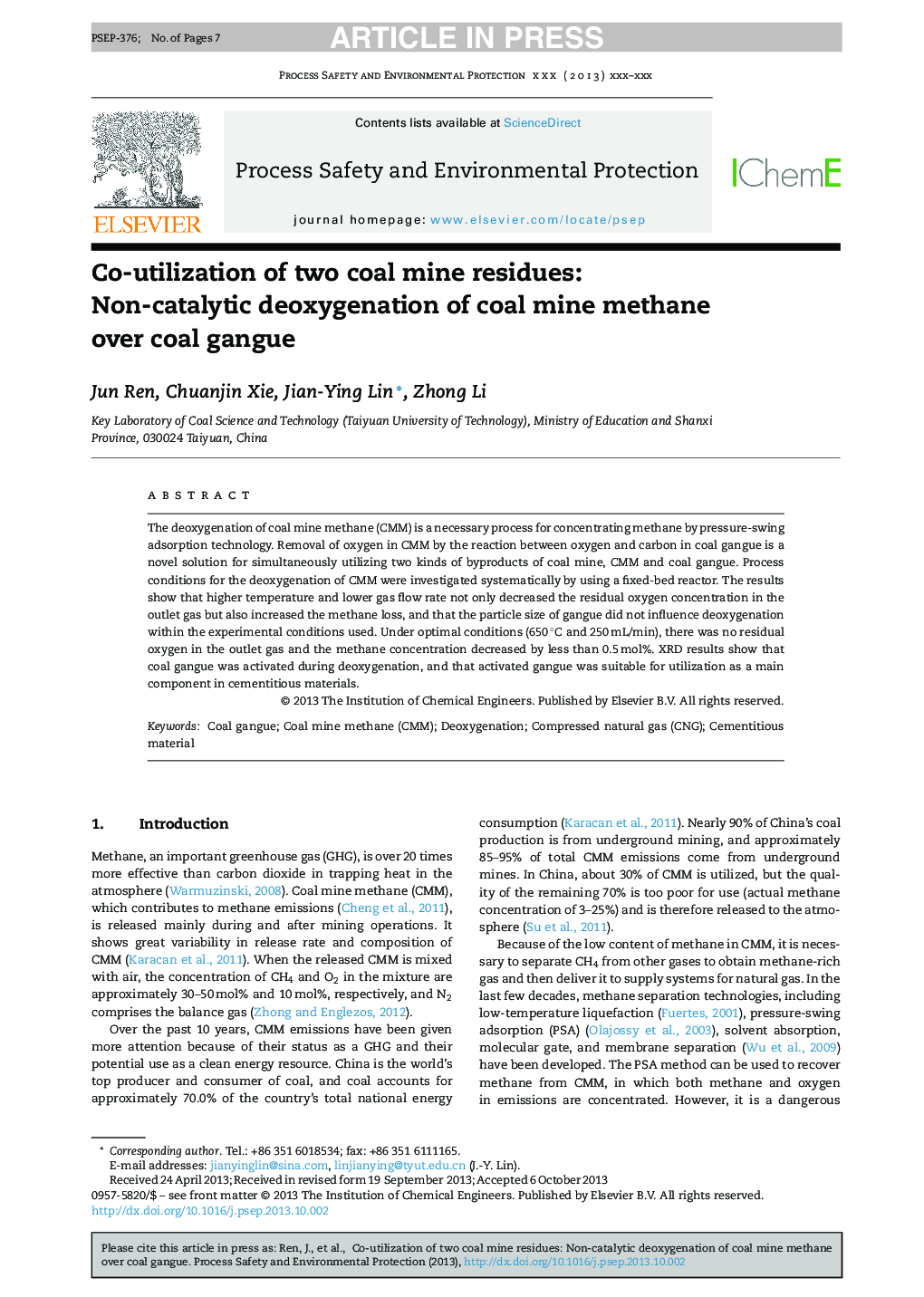| Article ID | Journal | Published Year | Pages | File Type |
|---|---|---|---|---|
| 10373935 | Process Safety and Environmental Protection | 2014 | 7 Pages |
Abstract
The deoxygenation of coal mine methane (CMM) is a necessary process for concentrating methane by pressure-swing adsorption technology. Removal of oxygen in CMM by the reaction between oxygen and carbon in coal gangue is a novel solution for simultaneously utilizing two kinds of byproducts of coal mine, CMM and coal gangue. Process conditions for the deoxygenation of CMM were investigated systematically by using a fixed-bed reactor. The results show that higher temperature and lower gas flow rate not only decreased the residual oxygen concentration in the outlet gas but also increased the methane loss, and that the particle size of gangue did not influence deoxygenation within the experimental conditions used. Under optimal conditions (650 °C and 250 mL/min), there was no residual oxygen in the outlet gas and the methane concentration decreased by less than 0.5 mol%. XRD results show that coal gangue was activated during deoxygenation, and that activated gangue was suitable for utilization as a main component in cementitious materials.
Related Topics
Physical Sciences and Engineering
Chemical Engineering
Chemical Health and Safety
Authors
Jun Ren, Chuanjin Xie, Jian-Ying Lin, Zhong Li,
